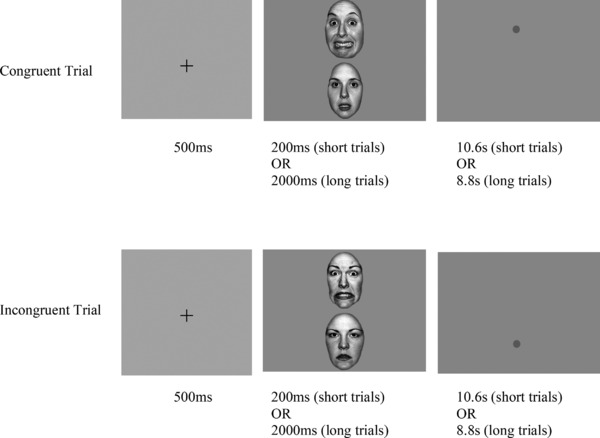For the past few weeks, and for the rest of the summer, I have assisted in the Tulane Child and Family lab. Conveniently located on Tulane’s campus, in Percival Stern Hall, I am surrounded by familiarity. As a result, at first I thought my work this summer would just be a continuation of my work in this lab this past semester. However, I am quickly finding that this is not the case. Hopefully this blog post sheds some light on my new experiences, relationships, and insights.
Tulane’s Child and Family lab mainly examines how experiencing trauma at a young age affects a child’s development. With preschool-aged children and their mothers as the participants of the study, my lab also investigates how maternal factors can be a buffer for child maladjustment.  The graduate students of the lab interview and administer tests and games to the children and their mothers, and then they team up with the undergraduate students (such as me) to analyze and report on the information. In fact, a paper written by my Principal Investigator (P.I.) and a graduate student in the lab was just accepted for publication. It details their findings on biosynchrony, which is the idea that prenatal factors, such as the amount of activation of the stress response system, in the mother can be passed down biologically to her children. The people in this lab constantly find new ways to interpret and analyze the data they collect in order to prove a new finding.
The graduate students of the lab interview and administer tests and games to the children and their mothers, and then they team up with the undergraduate students (such as me) to analyze and report on the information. In fact, a paper written by my Principal Investigator (P.I.) and a graduate student in the lab was just accepted for publication. It details their findings on biosynchrony, which is the idea that prenatal factors, such as the amount of activation of the stress response system, in the mother can be passed down biologically to her children. The people in this lab constantly find new ways to interpret and analyze the data they collect in order to prove a new finding.
While I did not contribute to the research paper I just mentioned, I help with many other tasks in the lab. Thus far, I have not played a very versatile role in the lab, as I have been mostly coding, exporting and entering data. I have transcribed a few interviews of the mothers, which is important so that we can later code the content of the interviews. Additionally, I have entered a lot of data from cognitive tests we administer to the kids, interviews of the mothers, and self-reported surveys of the mothers. Later, someone will go in and analyze this further using statistics so that we can apply the data to a research question. Lastly, I have been exporting data from a dot-probe task that we do with the kids, which is a test of selective attention when presented with threatening stimuli. Often, the dot-probe paradigm is used to assess conditions of people with anxiety disorders, and we are looking at the data we find in correlation with the amount of trauma the children have experienced. Essentially, the participants will stare at a plus in the middle of a screen and then two different faces will pop up (they can be either happy, neutral, or threatening/angry) and stay on the screen for a predetermined amount of time. After the faces disappear, a dot appears on the screen, which the participants are supposed to locate as quickly as they can:

This data, while complex, is quite interesting and can illuminate a lot about the state of a participant. A graduate student had to train me on how to properly export the data, but it was not difficult to pick up on. However, we are finding some issues with the data, such as the fact that the length of a trial of the dot-probe can sometimes outlast the general attention span of a child. Either way, exporting the data has been fascinating, and I will hopefully be teaming up with one of the graduate students to create a poster and presentation on the findings of the dot-probe data.
In the near future, I am scheduled to go help recruit participants. These trips, which take place at the local HeadStart preschools, aim to recruit as many moms and children as possible for our study, as well as expose our lab’s name to the community so that we can hopefully expand the number of people who participate in our study. As a research lab, everyone is very grateful to the schools that let us come and recruit people.
Because it is summer, not many people from the lab are currently here, other than a few undergrads and the usual number of grad students (4). As a result, I am forming closer relationships with everyone in the lab because we are working a lot together and in such close quarters. Furthermore, I have gotten to see a more in-depth look at the process of getting a Ph.D., and all the work it takes. This experience has also confirmed for me that I do not want to go into research as a career. While I enjoy it now, I do not think that I could do it for many years to come. It has been, and will continue to be, an invaluable experience; I love my lab, the people in it, and the work we do, but as a career path, it is not for me.
Initially, I wanted to join a research lab to see if research was for me as a long-term path, but now my goals have shifted in that I am enjoying delving deeper into a field about which I am passionate. I hope to become a medical doctor someday, and it is paramount that I see and experience the origin of the information I will be using to treat patients. For anyone reading this who wants to start doing research at Tulane, the best piece of advice I can offer you is to start early. I was in a Neuroscience research lab for a semester during freshman year, and then switched to Psychology midway through my sophomore year. Because I am a Neuroscience and Psychology double major, I started my search for a lab the second time by looking up Tulane faculty on the Neuroscience and Psychology department websites. I also talked to professors I knew in those departments, and a few of them recommended that I talk to Dr. Gray (whose lab I am in now). I then emailed all the professors whose research interested me, and I got a few replies. I applied to multiple labs, and Dr. Gray’s lab was the first I interviewed with. They invited me to work in their lab pretty immediately, and I accepted. I feel very grateful for the opportunity to get to work in this lab, especially because the work we are doing, especially the subject matter, aligns with my passions and future career goals. So, make sure you find a lab you find interesting; it will make all the difference.
Clearly, I am interested in the work this lab is doing, or I would not have stayed over the summer to work in it. As for the rest of the summer, I hope to be able to expand my role in this lab even further and get as involved as I can. I love working on a diversity of tasks, and I look forward to finding creative ways to participate in the work we are doing.

Excited to see where the dot-probe data goes!!